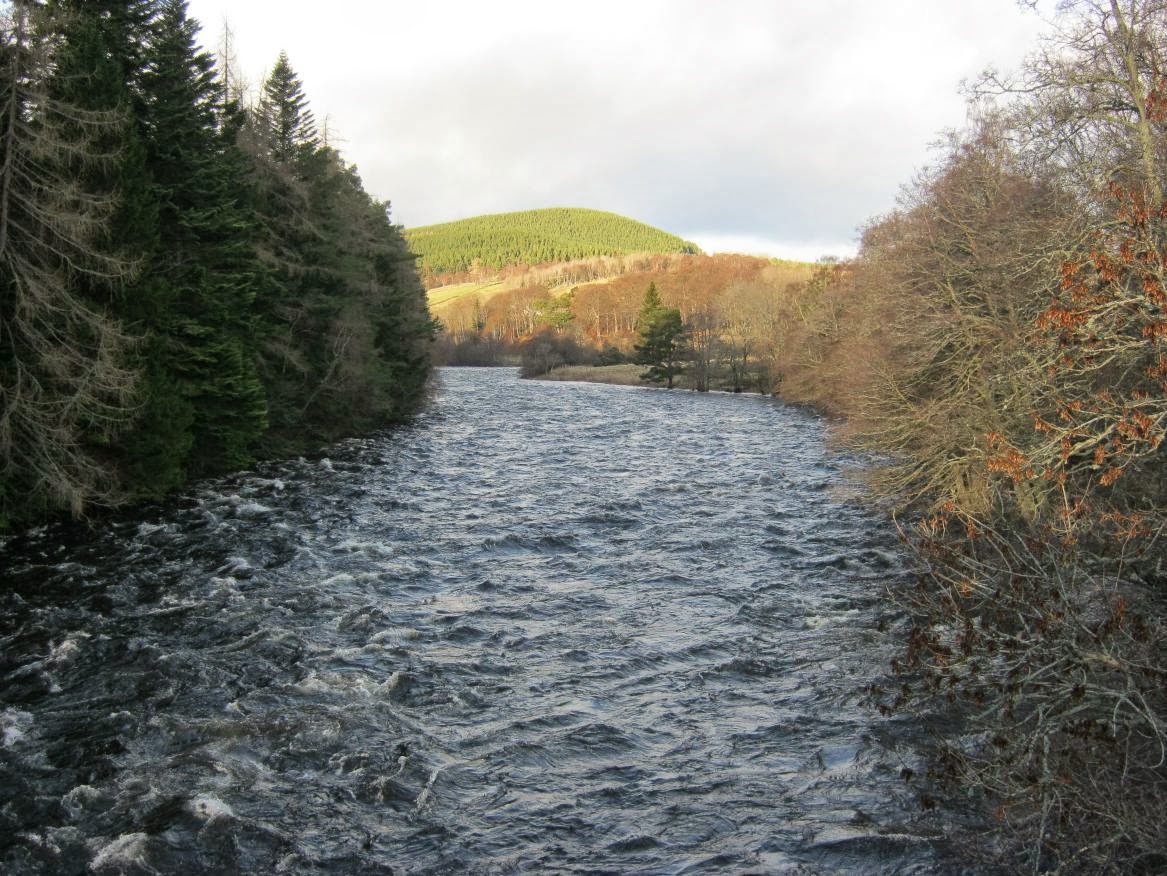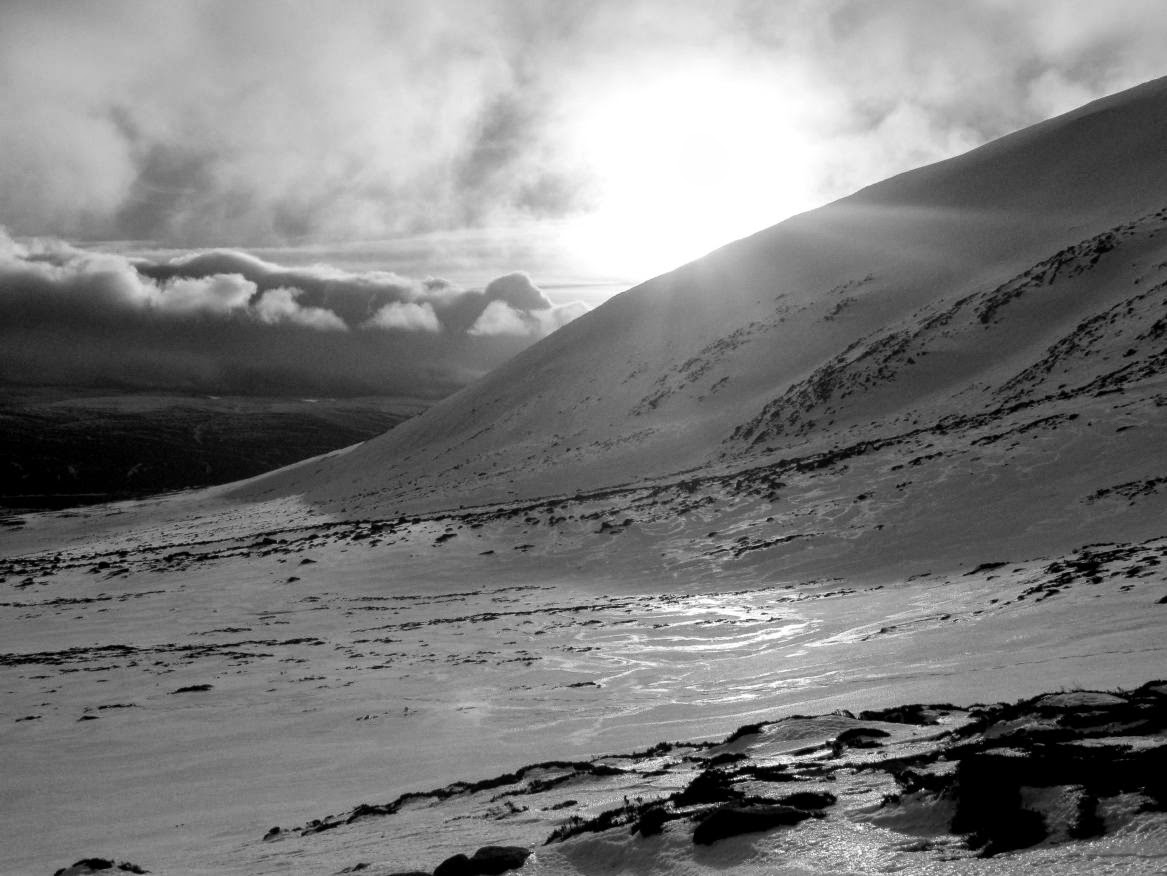Wham! The gust of wind punched me in the chest, lifted me off my feet, and hurled me twenty feet back through the air to land, dazed, on a snowbank. I struggled to get up again but the force of the wind was relentless, pushing me back step by step, crushing me to the ground.
I had never experienced wind like it: ferocious, elemental, irresistible. When I saw "gusts to 60mph" in the forecast I thought I could handle it, but faced with an exposed climb ahead I couldn't risk being blown off my feet a second time. It was galling to turn back less than 200m from the summit, but I had no choice.
The plan
The plan had been simple enough: get the bus to Crathie, walk to the Gelder Shiel bothy where I would spend the night, and climb Lochnagar the next day. Unfortunately things started going wrong almost from the very start.
My train was late at Grantham, which caused a knock-on effect resulting in massive delays later on in the journey. I missed the last bus from Aberdeen to Deeside, so had to stay in the Aberdeen youth hostel overnight. When I arrived at Crathie the next morning, I spent several hours scouting out the Balmoral estate.
Balmoral
The Balmoral estate will be a primary setting for Alpine Dawn Book II - as yet unnamed, but set in 1848 and 1849. A big reason for going on this trip at all was to conduct some field research and get a feel for the area myself.
My first discovery was that it's virtually impossible to actually see Balmoral castle from anywhere! The trees have grown up a great deal, and I couldn't even see a glimpse of the turrets from the top of the nearby hill (or from the other side of the river Dee). Happily, this is of no importance to me as the modern castle bears no resemblance to the building that would have existed in 1848. The first castle was demolished in the 1850s as it was too small for the Royal household.
 |
| The River Dee, taken from the bridge built by Brunel |
I walked up to find Victoria's cairn and was treated to a spectacular view as I came upon it:
 |
| Queen Victoria's cairn |
My books don't take sides when it comes to the class warfare of the 19th century. My job as author is to show the story from all possible sides, which is why in The Atholl Expedition I picked characters from every possible level of the social spectrum. All of these people have qualities both good and bad. Some may criticise me for portraying the Royal couple in a positive light, perhaps wishing that I had instead pursued some political or social agenda in my novels, but I see no need to take sides in a war that is no longer being fought (or, at least, no longer being fought in the same way or on the same fronts).
Gelder Shiel
After exploring Balmoral I walked to Gelder Shiel in increasingly strong winds; however, the weather was otherwise good and, despite the forecast, I convinced myself that the next day would be acceptable for climbing.
Gelder Shiel is a comfortable little bothy and I spent about 15 hours there in total. Once unpacked, I spent a fair bit of time writing up notes from my research I'd carried out in the Balmoral estate, and fleshing out ideas for my next book.
 |
| At Gelder Shiel |
I started the walk-in to Lochnagar just before dawn. It felt pretty windy in Glen Gelder but I was confident things would improve later on. The sky was clear and I was treated to some absolutely stunning cloud and light effects as the sun rose.
 |
| Dawn |
 |
| A herd of red deer |
 |
| The approach to Lochnagar |
As I climbed, the crusty snow lay in deeper drifts and it got windier ... and windier ... and windier!
 |
| Above the snowline |
 |
| Ominous lenticular clouds |
 |
| On the way down, an expansive view of the Balmoral Forest |
Remarkably, all three hostels in Braemar were closed so I was obliged to take a room at the Fife Arms Hotel.
The retreat
With several days left until I had to go home, you'd have thought I would have jumped at the chance to explore some more areas and climb some more mountains. However, all the mountains accessible from Braemar are big days, usually requiring a stay at a bothy, and the forecast from Friday onwards was pretty bad - I didn't fancy being blown off another mountain. I considered doing one of the smaller hills, but to be honest that would have meant staying another night at the hotel, and I had started to feel a little apathetic about the entire trip. I suppose my failure on Lochnagar disheartened me a little.
My research work - the main reason for coming in the first place - was done; I had been beaten by Lochnagar, the mountain I really wanted to climb; any other objectives were purely secondary. I decided to return home on the first train the next morning.
Despite my failure to climb any mountains at all, this has actually been a very successful trip. I've done a lot of highly useful field research, and perhaps more importantly, my sojourn at Gelder Shiel allowed me some thinking space and I have already planned out about half of my next book...




No comments:
Post a Comment